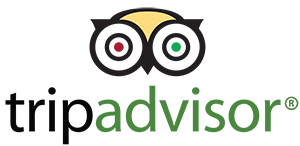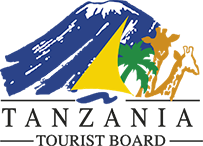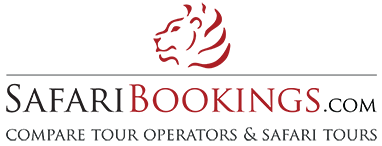Our Travel Tips
The mountain Kilimanjaro can be climbed all year round, however it is best to climb when there is a lower possibility of rain. The dry seasons are from the beginning of:-
- December through the beginning of March
- Late June through the end of October.
These are considered to be the best times to climb in terms of weather and correspondingly are the busiest months (high season).
The most important issue is safety, as the risks associated with climbing increase significantly when the weather is foul. The effects of rain, mud, snow, ice and cold can be very strenuous on the body. Likewise, your chances of a successful summit also increase significantly with nice weather. Of course, the mountain gets more foot traffic during these periods as well.
From January through mid-March are the warmest months, with clear skies in the mornings and evenings. During the day, clouds may appear along with brief showers. The long rainy season spans from the end of March to early June.
All weather adventures we do not recommend climbing during long rain season unless you are an experienced backpacker who has trekked in similar conditions. It can be very wet, and visibility may be low due to heavy clouds. The crowds are gone, however. From mid June to the end of October, the mountain is generally a bit colder, but also drier. The short rainy season spans from the beginning of November to the beginning of December. Afternoon rains are common, but skies are clear in mornings and evenings.
Note that the rains are unpredictable and may come early or extend beyond their typical time frames. It is possible to experience mostly dry weather conditions during the rainy season, just as it is possible to have heavy rain during the dry season.
Weather on Kilimanjaro – When to Go?
April – June
The main rainy season lasts from the end of March through to mid June. As elsewhere in the world, when exactly it rains and when it stops is impossible to predict. It’s the warmest time of the year in Tanzania, but those months are so wet that many operators simply do not offer climbs in April/May at all.
June – August
The rain gradually decreases, and so do the temperatures on Kilimanjaro. The weather on Kilimanjaro is fairly dry and clear but the nights will be bitter cold. June is quiet, but the number of climbers increases as the year progresses. It is an excellent idea to choose June for your adventure because of great weather and almost climbers-free routes.
The number of climbers will be increasing as the year progresses. Starting from July the majority of the routes will be quite busy.
August – October
August and even more so September is the peak climbing season on Kilimanjaro. The weather is good with many clear days and warmer than in June/July. You may, however, get clouds blanketing the forest/moorland zone, and on the southern routes you may get rained on on the first days. But once you leave the rain forest behind all is good! The good conditions last into about mid October when the build up for the short rains begins.
October – November
The weather on Kilimanjaro becomes more unstable and the number of climbers drops. As in all tropical regions of the world, the wetter time of the year announces itself with afternoon clouds and occasional thunderstorms. As long as you are equipped to withstand the occasional shower, this should not present any major problems.
November – December
November is the small rainy season, and the rain lasts into mid December. The temperatures have dropped and the rain brings with it all the hazards that I described at the top of the page.
November might not be the best pick in terms of weather, but gives a great opportunity to enjoy the breathtaking views of misty-covered Mount with its snow-capped peak, and to make some terrific pictures.
December – January
The four to six weeks around Christmas and New Year are the second peak climbing season on Kilimanjaro. Traffic is extremely high despite there still being a good chance of rainfall and thick clouds in the lower regions. It’s not a time I would choose.
January – March
Mid January to mid March is also a good time to climb Kilimanjaro. The weather is reasonable, not too cold, not too wet, and there aren’t as many climbers. The days are mainly dry, beautifully clear with few clouds and occasional brief showers. In March the chances of rain gradually increase as you approach the long rainy season.
Helpful Information
Climbing During the Low Season
The prospect of having the mountain to yourself is what draws people to climb during the low season. The mountain is very empty and it is possible to be the only party at a campsite. This quiet and solicitude is what many people seek when going outdoors.
Secondly, although it does rain quite a lot during the low season, most of the time the rains arrive in the afternoon. With Kilimanjaro’s trekking schedule, most of the hiking can be done in the mornings, which means that the time spent on trails while it rains can be minimalized. One thing people forget is that precipitation creates snow, which is not a bad thing. Kilimanjaro is best displayed during the rainy season. The most beautiful sights of the mountain often are enjoyed in the mornings after it snows. No matter when you climb, you have the chance to see the night sky over the rift valley.
Why we say that, mountain Kilimanjaro can be climbed all year round?
More things worth mentioning about the weather on Kilimanjaro.
You may decide to climb at a less than perfect time, be it because you want to avoid the main rush or because that is the only suitable timing for you holidays. If you do so, consider Northern Circuit Route or the Rongai Route. The northern side of the mountain is much drier than the other Kilimanjaro routes. Moreover, if you want the best weather on Kilimanjaro but hate crowds, the same applies. Choose your route wisely.
There is less traffic on Rongai, Lemosho and Northern Travers Route than on the popular and always busy Machame and Marangu routes
Some climbers prefer to summit during a full moon.
Summiting Mt. Kilimanjaro on a cloudless evening is without a doubt an unforgettable experience. Now imagine seeing the glaciers glitter in the moonlight of a full moon absolutely stunning.
The majority of a Kilimanjaro climb takes place during the day and it is only the summit attempt that starts before midnight in order to reach the summit at sunrise. A summit attempt done during a full moon could make the evening climb easier and very beautiful since you might not need to switch on your head lamp in the bright moonlight. However, it is also very bright for sleeping and stars are not as visible.
Planning a trek up Mt. Kilimanjaro to coincide with the full moon dates detailed below, could further enhance the whole experience, as the bright moonlight would provide spectacular views of Kibo from most of the overnight camps.
| 2018 full moon dates | |||
| New moon | First quarter | Full moon | Last quarter |
| 18 December | 26 December | 2 January | 9 January |
| 17 January | 25 January | 31 January | 7 February |
| 16 February | 23 February | 2 March | 9 March |
| 17 March | 24 March | 31March Blue Moon | 8 April |
| 16 April | 23 April | 30 April | 8 May |
| 15 May | 22 May | 29 May | 6 June |
| 13 June | 20 June | 28 June | 6 July |
| 13 July | 19 July | 27July Lunar eclipse | 14 August |
| 11 August | 18 August | 26 August | 3 September |
| 9 September | 17 September | 25 September | 2 October |
| 9 October | 16 October | 24 October | 31 October |
| 7 November | 15 November | 23 November | 30 November |
| 7 December | 15 December | 22 December | 29 December |
Kindly note that we cannot guarantee the accuracy of the information provided in any of the above Full Moon tables.
Although every effort is made to achieve accuracy in these moon calendars, users may use these dates strictly at own risk and are therefore strongly advised to confirm the accuracy of the details at own arrangement, before travelling.




